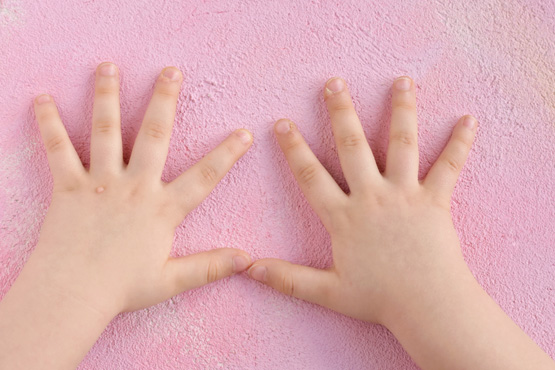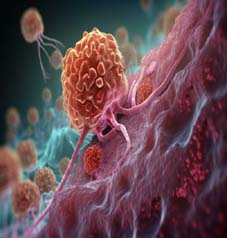WARTS IN CHILDREN

What Causes Warts in Babies?
Newborn babies can contract HPV (Human Papilloma Virus) infection from their mothers while passing through the birth canal. This usually doesn't manifest symptoms after birth, and infected babies often appear healthy. However, the effects of HPV can sometimes be seen even years later and cause various health problems in children.
The most common symptom of HPV infection in babies is laryngeal papillomatosis. This condition causes the growth of warts and stalked papillomas in the larynx (throat) area. It is generally seen in children between the ages of 2 and 5, and is known to be caused by HPV Type 6 and Type 11. This condition affects about 1.4 children in every 100,000 births.
Laryngeal papillomatosis can also affect other parts of the respiratory tract such as the epiglottis, trachea, and even the bronchi. This disease is one of the most common causes of airway narrowing and snoring in childhood. Additionally, warts can rarely be seen in the anus and genital area due to HPV infection.
Because of these potential effects on babies and children, it is extremely important to be aware of HPV infection during pregnancy and take appropriate precautions before childbirth. These can help prevent the infection from being passed from mother to child and ensure your child grows up healthily.
Treatment of Warts in Children
As is known, cutaneous warts can regress spontaneously, and the underlying mechanisms responsible for this are not fully understood. However, several observational studies of warts in children have shown the possibility of spontaneous healing. A follow-up study of 364 children with warts found that only 7% of eleven-year-olds still had warts by the age of sixteen. This indicates a regression rate of 93%. A study conducted in the Netherlands on 366 schoolchildren diagnosed with warts reported that 50% of the participants were wart-free within a year.
A systematic review published in 2014 examined the effectiveness of various cutaneous wart treatments in adults and children, stating that topical salicylic acid treatment was beneficial, while cryotherapy and immunotherapy provided more doubtful evidence of efficacy. The effectiveness of other treatments such as bleomycin, photodynamic therapy, duct tape, surgical excisions, lasers, etc., is not fully known.
Warts in children are known to regress more quickly than in adults, giving different efficacy rates compared to adults. Also, young patients may be less tolerant of painful interventions, limiting the available treatment options.
In conclusion, it is suggested that plantar lesions in young or uncooperative children should be approached with a "watch and wait" strategy or salicylic acid-based preparations. Older children can be treated with a similar approach, but cryotherapy can also be used as an alternative. Stubborn lesions that do not respond to these methods may be considered for third-line treatments such as immunotherapies or laser treatment, although there is less evidence for the effectiveness of these treatments.
This article may also interest you

Warts are formed by various strains of a common and diverse family of viruses known as the HPV. Some of these viruses can...
Read more

 TR
TR EN
EN